The biggest festival celebration of the Philippines is held in Cebu and it’s called Sinulog (Santo Niño Festival). This festival displays the culture and religious affinity of Cebuanos. It is usually held every third Sunday of January.
Sinulog Festival is an annual religious and cultural festival in Cebu City, Philippines. It is a combination of religious and cultural elements, with participants performing a Sinulog dance to music. The festival is believed to have originated in the 13th century when the first Spanish settlers arrived in Cebu. It is said that they brought with them a statue of the Santo Niño, which became the focus of the festivities.
Cebu City has become the center of the Santo Niño festivals in the Philippines. It is the first festival to become famous as it is visited by a one to two million people from all over the country and world. Santo Niño represents the child Jesus, the patron saint of Cebu.

Sinulog: Santo Niño Festival in Cebu
Sinulog is well-known for its street parties which happen at night before and the actual night of the festival itself. The Sinulog Festival boasts its rich history through colorful street decorations and a parade. The parade includes dance rituals that remembers the paganism in the past of the Filipinos and their openness to convert to the Christian religion.
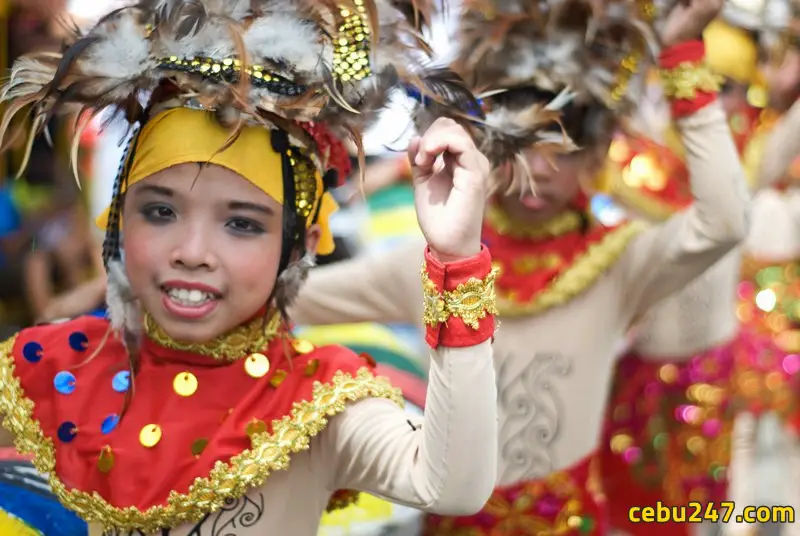
The festival also includes the pageantry of participants who wear bright-colored costumes. Fireworks and loud “Viva Pit Senyor” can be heard from all over the festival place. Loud beats from the drums, trumpets, and native gongs are also heard making the streets alive and full of enthusiasm.
Sinulog is not just found in the city proper. Smaller versions of this festival are found in the smaller parts of Cebu to honor the Santo Niño. Youth of Cebu are also active in partipating for the Sinulog. A week before the Grand Parade, youths perform and this is called Sinulog sa Kabataan.
Meaning of Sinulog
The word “Sinulog” comes from the Cebuano verb sulog, which means “like water flowing backwards.” This refers to the forward and backward movement of the dancers during the Sinulog dance. The Sinulog dance is performed to the beat of drums and traditional Cebuano music. The festival also includes a parade, which features marchers in brightly-colored costumes carrying images of the Santo Nino.
In addition to its religious and cultural significance, the Sinulog Festival is also a time for celebration and feasting. Families and friends come together to enjoy food, music, and dance. For many people, the Sinulog Festival is a cherished tradition that embodies the spirit of Cebu.
The festival is a major tourist draw, with visitors coming from all over the world to experience the festivities. The Sinulog dance has also become a popular performance art, with dancers often wearing colorful costumes and performing acrobatic feats. The Sinulog Festival is one of the most important events in the Philippines and is a must-see for any traveler to the country.
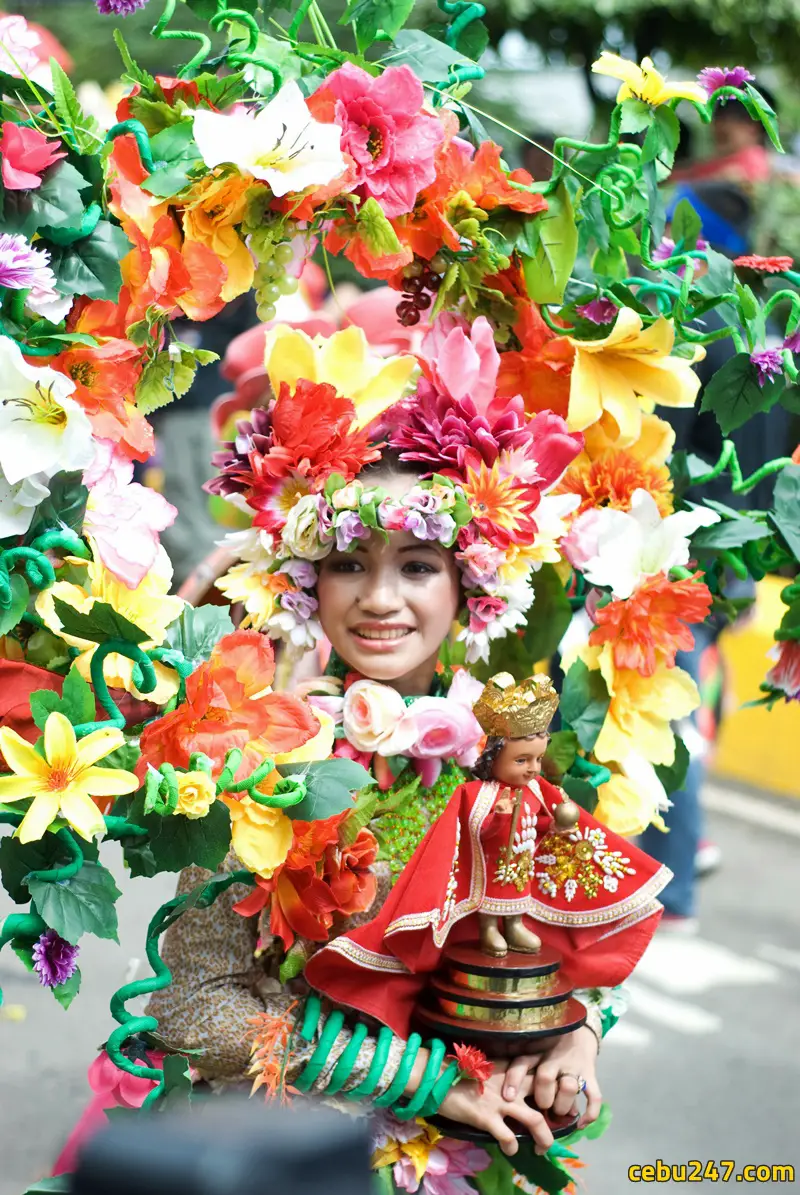
History of the Festival
In 1521, Fernando de Magallanes arrived on Cebu Island and claimed it to be part of Spain. He was the one who introduced Christianity to the Filipinos who were animists before. A wooden statue of Santo Niño was given to the wife of the Cebu leader to commemorate the baptism. This event was still held as a ceremony and tradition up until now.
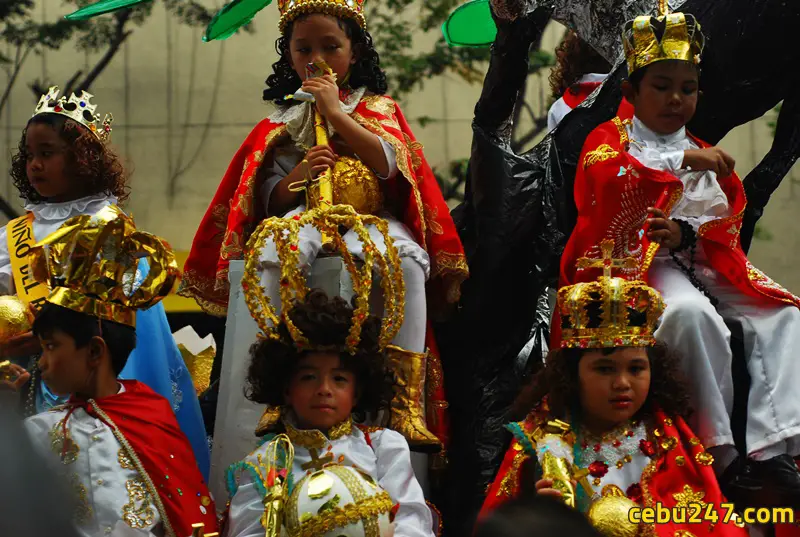
What is the meaning of the word Sinulog?
Sinulog means “graceful dance” in Cebuano dialect. It comes from the word “sulog” which is etymologically related to the passing of water. This is imitated by the dance steps in the traditional dance of Sinulog.
Activities during Sinulog Festival
The activities during the Sinulog Festival are a combination of religious and cultural elements. The highlight of the festival is the Sinulog dance, which is performed to music by participants dressed in colorful costumes. The dance is a symbol of the Cebuanos’ devotion to the Santo Nino. The parade is another important part of the festival, with marchers carrying images of the Santo Nino and wearing brightly-colored costumes. In addition to these activities, there are also food stalls and live music performances.
The Sinulog Festival is one of the most important events in the Philippines. The festival is a combination of religious and cultural elements, with participants performing a Sinulog dance to music.
Grand Fireworks Display
One of the most anticipated events during Sinulog is the Grand Fireworks Display. It happens on the eve of the festival, Saturday night. The whole city of Cebu will be filled with fireworks. It is advisable to view it at the Fuente Osmeña Circle because it has a wide and unobstructed view of the sky. You may also view it at the SM City Cebu or Ayala Center Cebu. The Fuente Osmeña Circle is one of the best places to view the fireworks display during the Sinulog Festival. The circle has a wide and unobstructed view of the sky, making it the perfect spot to see the fireworks.
Sinulog Festival Queen
One of the most prestigious events during the Sinulog Festival is the “Sinulog Festival Queen” pageant. The pageant is open to all unmarried ladies aged 18 to 25 years old. The candidates are judged on their beauty, poise, and talent. The winner of the pageant will be crowned the “Sinulog Festival Queen” and will represent the city of Cebu in the upcoming year.
Sinulog Festivities
The Sinulog Festival lasts for 9 long days which leads to the central basilica. This is where a reenactment performance is done and massive church goers or followers actively participate. This event is headed by the highest Catholic priests.
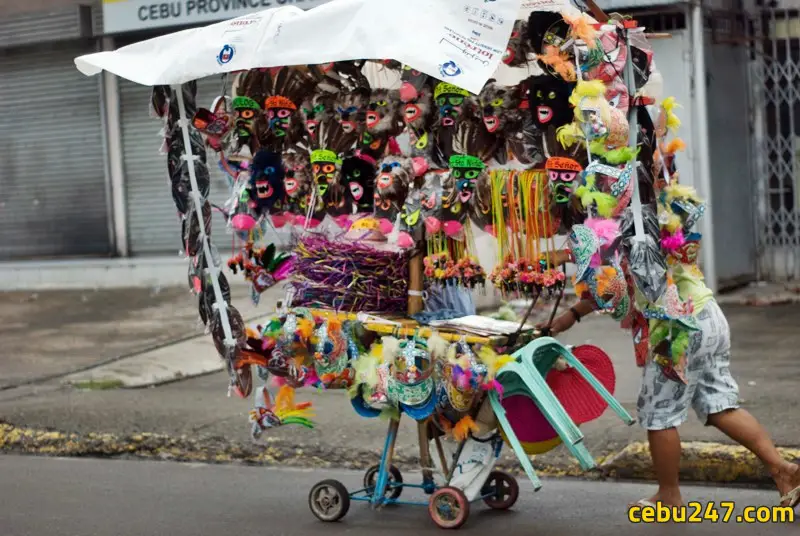
Sinulog Grand Street Parade
The highlight of the event is the “Sinulog Grand Parade,” where dances are performed in honor of the Santo Niño. There is also a fluvial parade held on the Saturday before the Sinulog, where decorated boats sail down the Mactan Channel to pay homage to Senior Santo Niño. Other activities during the festival include street parties, concerts, beauty pageants, and food fairs. The Sinulog Festival is truly a spectacular event that should not be missed!
Many people come to watch the street parade where participants from various communities in other parts of Cebu come to put on a good show while on the street. Performers are very friendly and would be happy to pose for you so you can take photos of them. It shows how proud Cebuanos are of their heritage and culture.
There are plenty of street vendors selling you a variety of stuff. From food to souvenirs to drinks and other items. This is like a carnival or a street fair after all and it’s a whole day activity (the last day) on the streets so everybody is in a celebratory mood even if it rains hard, the show still goes on!
The usual routine for some partyers is going out to the streets and watching the dancers and the floats pass by Fuente circle. After about 2-3 hours, people go down to Mango Avenue and have some barbecue and puso, then proceed to Ayala or SM for fireworks. Other people tend to party later in the evening by going to clubs and bars.
Who Can Celebrate Sinulog?
The Sinulog Festival is open to everyone. Families and friends come together to enjoy the festivities. The festival is a great way to learn about Cebu’s rich culture and history.
When is the Sinulog Festival?
The Sinulog Festival is held on the third Sunday of January.
What You Need to Know Before Going to Sinulog
There are a few things you should know before going to the Sinulog Festival. First, be sure to dress appropriately. The weather in Cebu can be hot and humid, so it is important to wear light, comfortable clothing. Second, be prepared for large crowds. The Sinulog Festival is a popular event, so there will be a lot of people in attendance. Finally, be sure to enjoy the festival! The Sinulog Festival is a great opportunity to experience Cebu’s culture and history.
The best way to enjoy the Sinulog Festival is to participate in the activities. Be sure to watch the Sinulog dance, participate in the parade, and enjoy the food and music. The Sinulog Festival is a truly unique event that should not be missed!
What You Need to Avoid During Sinulog Festival
During the Sinulog festival, it is important to avoid littering and respect the environment. It is also important to be respectful of religious ceremonies and refrain from drinking alcohol in public. Be sure to stay safe and hydrated. The weather in Cebu can be hot and humid, so it is important to drink plenty of water. Avoid wearing jeans and dark-colored clothes since it tends to absorb heat that could lead you to sweat a lot.
Places to Visit During Sinulog Festival
There are many places to visit during the Sinulog Festival. The most popular destination is the Basilica del Santo Niño, which is the largest church in Cebu. Other popular destinations include Magellan’s Cross, Fort San Pedro, and the Lapu-Lapu Shrine. These destinations will give you a truly unforgettable experience!
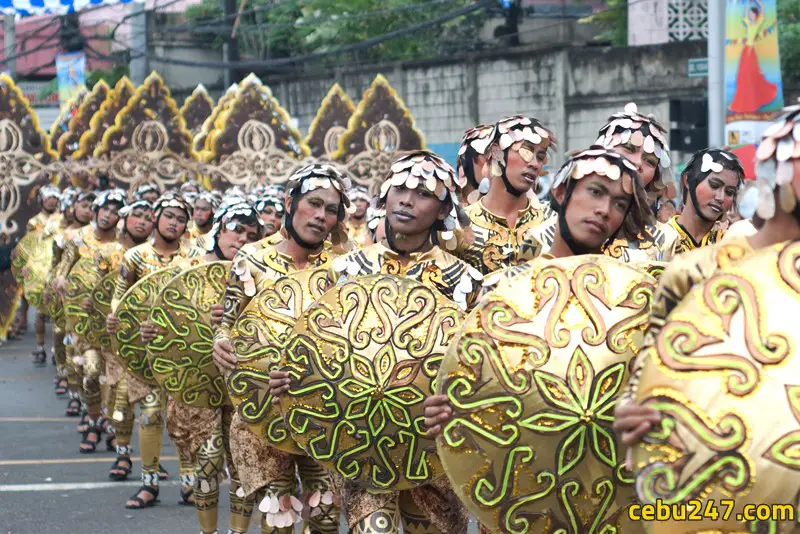
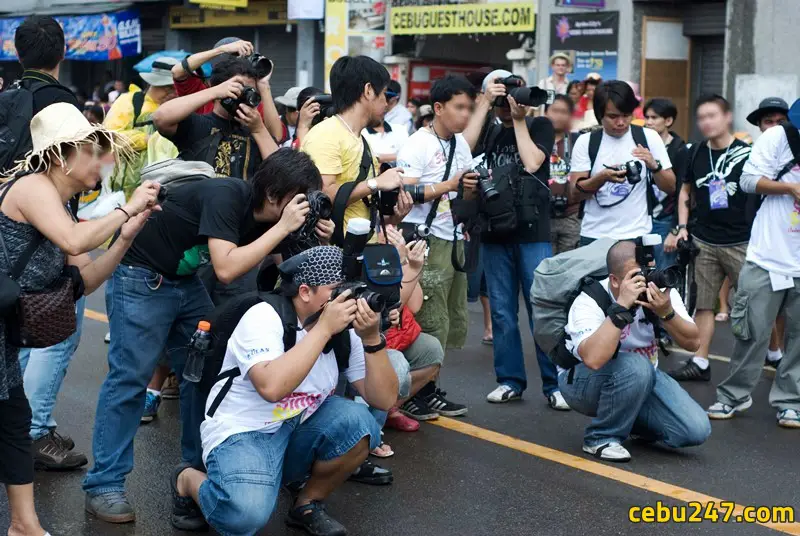
Tips when attending the Sinulog Festival for the First-Time
- Your accommodation must be booked way ahead of time because above-mentioned, there are a million or two tourists.
- It is also best not to book a flight on the day of the festival itself.
- Wear shorts and shirts is recommended as you are going to get painted in parties.
- Wear comfortable clothes is also a must.
- Wear comfortable shoes too! You will do a lot of walking since the streets are normally closed.
- Since it is a very big festival, you have to stay vigilant as thieves are common.
- Lastly, enjoy and get acquainted with Cebu and its rich history.
Enjoy the festive mood and the happy faces of Cebuanos during the Sinulog festival. Be prepared for this crowded event that is definitely worth the celebration!
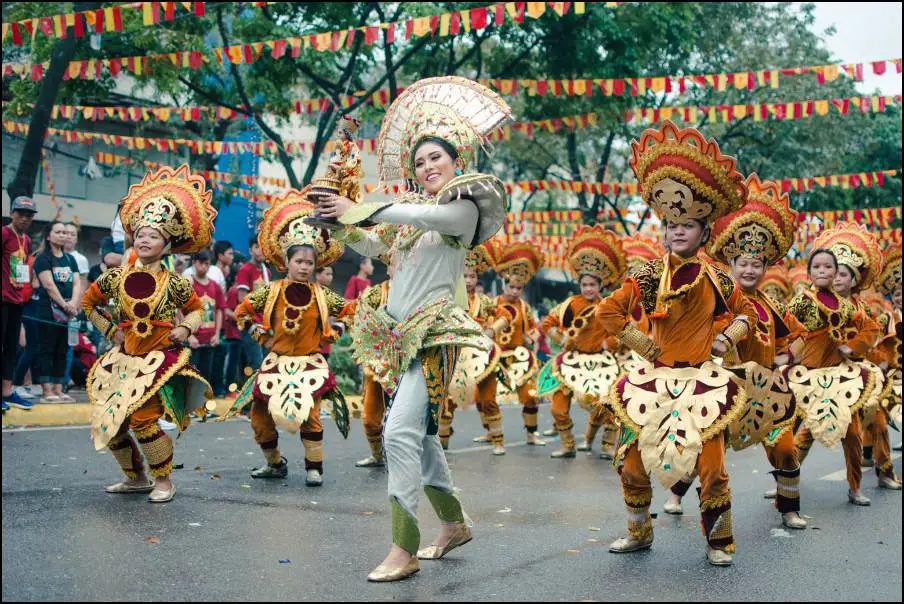
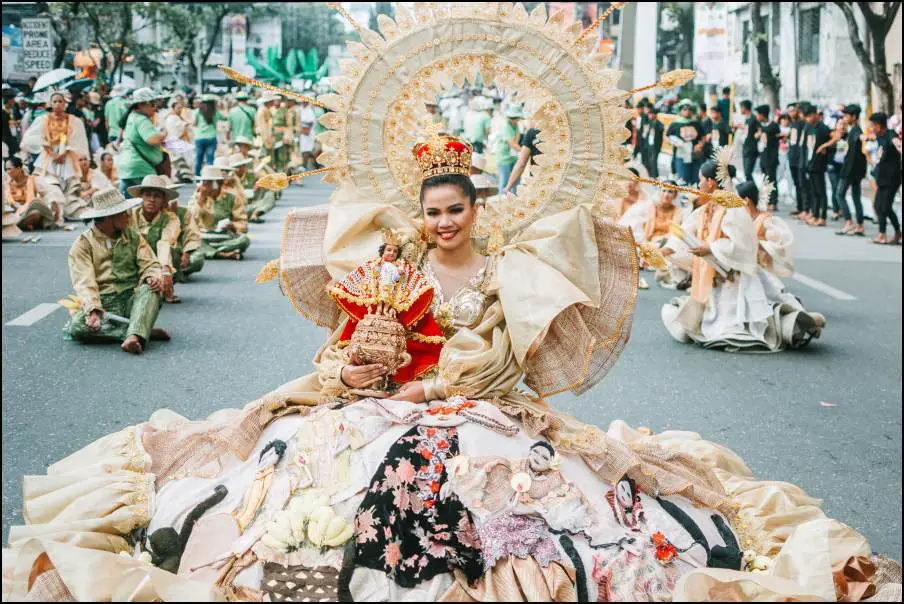
Summary
The Sinulog Festival is well known for being a very festive and enjoyable event. Every year, people from all over the Philippines come to Cebu to celebrate the event. The festival is usually held on the third Sunday of January, which is also the Feast of the Sto Niño. The event also includes a colorful procession of devotees who carry the image of the Sto. Nino. The Sinulog Festival is a great opportunity to experience Filipino culture.
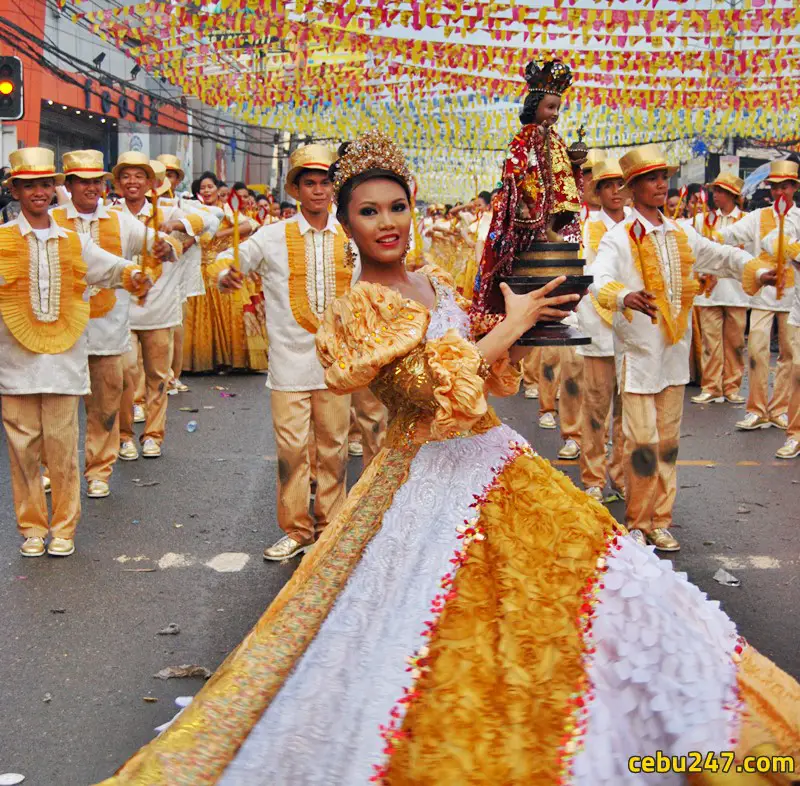
2 thoughts on “Sinulog Festival Cebu: The Biggest Festival in the Philippines”